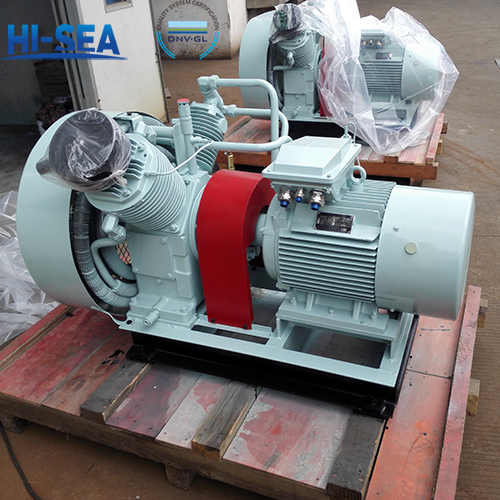
The working principle of marine air compressors
A marine air compressor is a machine that uses compressed air to propel machinery or tools. Its principle is to compress the air, increase its pressure and volume, and then transport the compressed air to the desired location through pipelines to generate power or for other purposes.
Overview
The working principle of a marine air compressor is to suck in external air and compress it to a higher pressure through mechanical means, supplying various systems and equipment of the ship.
Marine air compressors are usually driven by an electric motor (emergency air compressors are driven by diesel engines), which drives the rotor of the compressor to rotate, thereby sucking in and compressing air. The compressed air is stored in a storage tank for immediate use. When compressed air is needed, the compressed air in the storage tank can be transported through pipelines to the desired location, such as painting, cleaning, driving pneumatic tools, etc.
The working principle of a marine air compressor is similar to a pump, but it compresses air rather than liquid. The compression ratio of marine air compressors is usually relatively high, reaching 1:8 or higher, to generate sufficient pressure and flow to meet various needs.
Marine air compressors are widely used on ships, such as for painting, cleaning, driving pneumatic tools, pneumatic control systems, etc. They usually require regular maintenance and upkeep to ensure their normal operation and extend their lifespan.
1. The suction valve opens, the piston moves downward, the pressure inside the cylinder decreases, and external air is sucked in.
2. The suction valve is closed, the piston moves upwards, and the air in the cylinder is compressed, resulting in an increase in pressure.
3. The exhaust valve opens and high-pressure air is discharged from the cylinder.
4. High pressure air is cooled through a cooler.
5. The cooled air enters the air storage tank through the gas-water separator and dryer
For more marine air compressor information, please click here.





